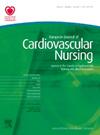Recovery from severe cardio-respiratory failure: the trajectory of muscle mass, strength, function and health related quality of life
IF 2.9
3区 医学
Q2 CARDIAC & CARDIOVASCULAR SYSTEMS
引用次数: 0
Abstract
Background The impact of intensive care unit acquired weakness (ICUAW) is associated with reduced muscle mass, strength, function and health related quality of life (HRQoL). Patients suffering from severe cardio-respiratory failure are known to lose considerable muscle mass and strength in the first 7 days of admission to the intensive care unit (ICU). Furthermore, patients surviving critical illness have a considerable less HRQoL and physical function with long term outcomes such as inability to return to work being reported. However, more information regarding muscle loss and recovery is required when patients leave hospital. Currently there are no treatments for ICUAW as once the process is established management is supportive, such as physical therapy. Purpose We Sought to investigate the effects of severe cardio-respiratory failure, in patients receiving extra corporeal membrane oxygenation (ECMO), on ICUAW (including muscle mass, strength, function and HRQoL). Researching a real life model of ICUAW allows the observation of the loss of muscle mass and strength in the first stages of critical illness and severe cardio-respiratory failure. Methods Adults receiving ECMO for severe cardiorespiratory failure were included. Muscle mass was measured using ultrasound of the rectus femoris cross sectional area (RFcsa). Muscle strength was measured using hand held dynamometry for both hand held grip strength and isometric leg extension. HRQoL was measured using the EQ-5D-5L. Function was measured using the short physical performance battery (SPPB). Measurements were taken on day 0, day 7, ICU discharge, hospital discharge and at out-patient follow up. Results 17 patients were recruited with 10 patients completing follow up. Patients lost 24% muscle mass in the first 7 days of ICU admission and ECMO initiation, with muscle loss continuing up until ICU discharge. Contrary to the hypothesis only 50% of the patients were seen to recover muscle mass at follow up. Strength and function all considerably improved between ICU discharge and out patient follow up. The EQ5D crosswalk index supported this suggesting considerable functional improvement. Conclusion Patients in severe cardio-respiratory failure lose considerable muscle mass in the first 7 days of admission, with only 50% of these patients recovering the initial muscle loss at follow up. However, strength, function and HRQoL all improve following ICU discharge suggesting an element of functional recovery. Strength and function have shown to improve regardless of the status of the muscle mass. Therefore, given the advantages of the real-life model and novel findings, this could serve as a platform to assess muscle loss and recovery over a longer time frame continuing to build the understanding of the patients recovery trajectory from critical illness.Rectus Femoris Muscle MassHand-Held Grip Strength严重心肺功能衰竭后的恢复:肌肉质量、力量、功能和与健康相关的生活质量的轨迹
背景 重症监护病房获得性肌无力(ICUAW)的影响与肌肉质量、力量、功能和健康相关生活质量(HRQoL)的降低有关。众所周知,严重心肺功能衰竭患者在入住重症监护室(ICU)的头 7 天内会失去大量肌肉质量和力量。此外,危重病人存活下来后,其 HRQoL 和身体功能也会大大降低,据报道,长期结果是无法重返工作岗位。然而,我们需要更多有关病人出院后肌肉损失和恢复情况的信息。目前还没有针对 ICUAW 的治疗方法,因为一旦过程确定,管理方法就是支持性的,如物理治疗。目的 我们试图研究接受体外膜肺氧合(ECMO)治疗的重症心肺功能衰竭患者对 ICUAW 的影响(包括肌肉质量、力量、功能和 HRQoL)。研究 ICUAW 的现实生活模型可观察危重病和严重心肺功能衰竭初期的肌肉质量和力量损失情况。方法 纳入因严重心肺功能衰竭而接受 ECMO 的成人。使用股直肌横截面积(RFcsa)超声波测量肌肉质量。肌肉力量采用手握式测力计测量手握握力和等长腿伸展力。HRQoL 采用 EQ-5D-5L 测量。功能采用短期体能测试(SPPB)进行测量。测量分别在第 0 天、第 7 天、重症监护室出院、出院和门诊随访时进行。结果 招募了 17 名患者,其中 10 名患者完成了随访。患者在入住重症监护室和开始接受 ECMO 治疗的头 7 天内,肌肉质量下降了 24%,这种情况一直持续到重症监护室出院。与假设相反,只有 50% 的患者在随访时恢复了肌肉质量。从重症监护室出院到患者出院随访期间,患者的力量和功能都有明显改善。EQ5D Crosswalk 指数也证明了这一点,表明患者的功能得到了显著改善。结论 严重心肺功能衰竭患者在入院后的前 7 天会失去大量肌肉,其中只有 50% 的患者在随访时恢复了最初失去的肌肉。然而,在重症监护室出院后,患者的力量、功能和 HRQoL 均有所改善,这表明患者的功能有所恢复。无论肌肉质量状况如何,力量和功能都有改善。因此,鉴于现实生活模型的优势和新颖的研究结果,该模型可作为一个平台,在更长的时间框架内评估肌肉损失和恢复情况,从而继续加深对危重症患者恢复轨迹的了解。 股直肌肌肉质量手握握力
本文章由计算机程序翻译,如有差异,请以英文原文为准。
求助全文
约1分钟内获得全文
求助全文
来源期刊

European Journal of Cardiovascular Nursing
CARDIAC & CARDIOVASCULAR SYSTEMS-NURSING
CiteScore
5.10
自引率
10.30%
发文量
247
审稿时长
6-12 weeks
期刊介绍:
The peer-reviewed journal of the European Society of Cardiology’s Council on Cardiovascular Nursing and Allied Professions (CCNAP) covering the broad field of cardiovascular nursing including chronic and acute care, cardiac rehabilitation, primary and secondary prevention, heart failure, acute coronary syndromes, interventional cardiology, cardiac care, and vascular nursing.
 求助内容:
求助内容: 应助结果提醒方式:
应助结果提醒方式:


